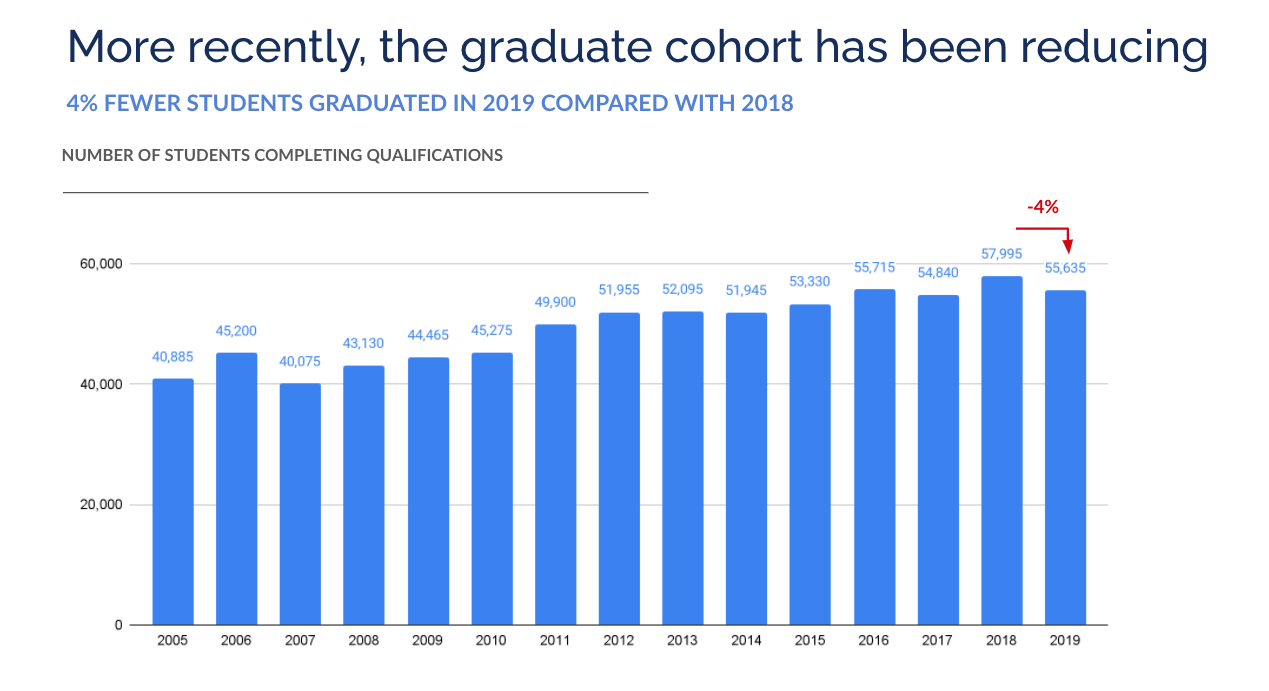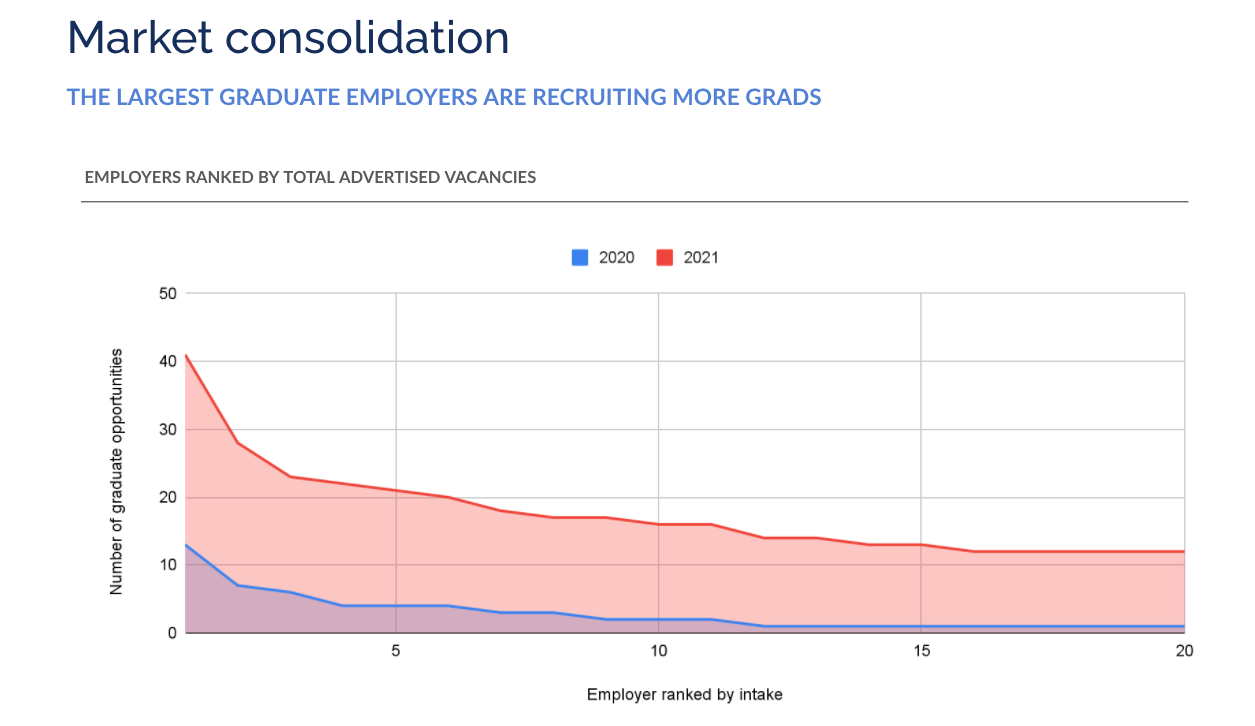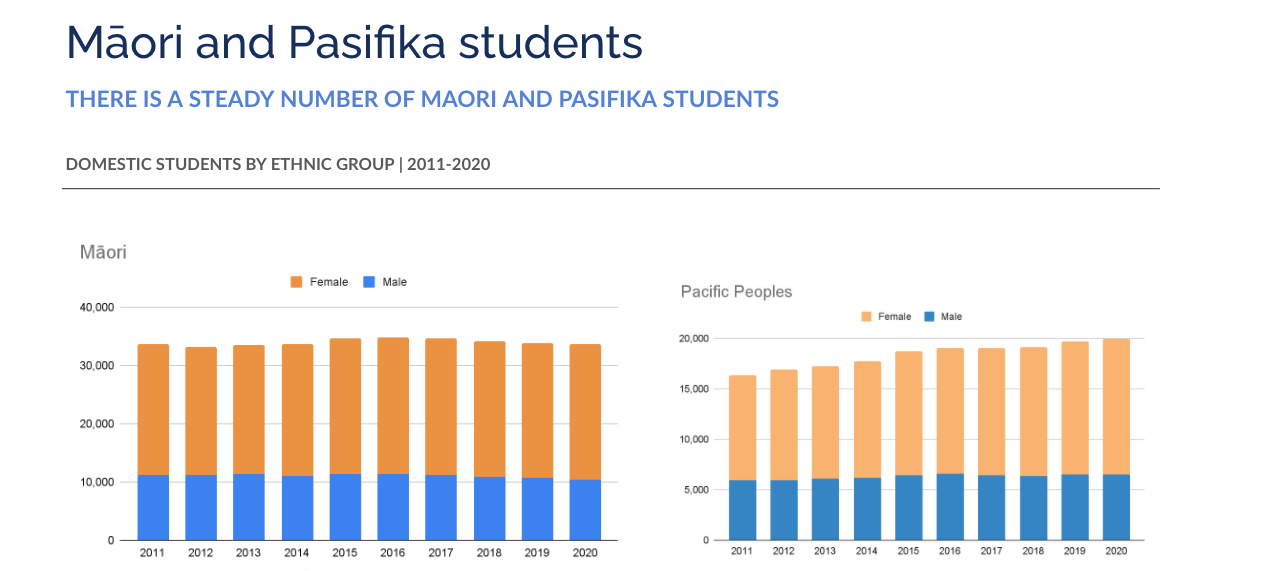Insights from the 2021 New Zealand Graduate Recruitment Season
Team Prosple
The top careers students are researching
More Business & Management and Law, Legal Studies, & Justice students are searching for graduate jobs than ever before, increasing their job searches by 2%. On the other hand, fewer Engineering & Mechanics and Sciences graduate students are searching for job opportunities. The same goes, too, for students with Humanities, Arts, & Social Sciences degrees.
This is a reflection of the changes we see in the number of searches by industry, with the Technology sector seeing a 5% increase in its total searches. The Accounting and Law sectors also saw an increase of 2% and 4%, respectively, while Banking & Financial Services and Engineering Consulting saw a 2% decrease in their share of job searches.
From 2004 to 2021, more and more graduates have been looking to fill job vacancies. On the other hand, interest in internships has gradually waned.
More students are choosing to work remotely
Compared to last year, there has been a decrease in the number of graduate students looking for work in Manawatu-Wanganui, Nelson, West Coast, Southland, Otago, Taranaki, Hawke’s Bay, Waikato, and the Bay of Plenty. For its part, Auckland saw an increase in its job search by 5%, while interest in work opportunities in Wellington and Canterbury remained largely the same.
In part, thanks to the “new normal” the world has had to adapt to, 2021 is seeing a significant increase in the number of students looking for remote work. This is an interesting phenomenon since most people wouldn’t even bother to work from home just a few years ago. Now, however, approximately 12% of graduate students across New Zealand are open to working remotely.
March & September saw more job searches from students
Traditionally, interest in job opportunities spikes up around March and slowly drops for the rest of the year, save for a small peak around August.
However, 2021 has broken the trend, with a considerable number of graduate students looking for work around March and between July and September. Despite this, March searches are down by 50% compared to where they were in 2019. The following graph illustrates this changing trend.

New Zealand seems to have reached its peak of students
In recent years, universities have constantly produced a barrage of graduates ready to start their careers. However, 2019 saw a reduction of 4% in the number of students who completed their qualifications.

This situation is similar to the trend observed back in 2007 when the university population plummeted by 11%. However, the decrease in 2019 is far manageable compared to what happened more than a decade ago.
Fresh graduate recruits have more competition
With the drop in the number of university graduates, competition for new graduate recruits is quite stiff among employers. In fact, organisations’ advertising efforts in 2021 increased by four times just to ensure their graduate opportunities get heard.

This trend may make it more difficult for smaller employers to grab the attention of new graduates.
International students
Growth in New Zealand’s tertiary students in the past decade has been, in part, due to the growing number of international students who make up about 1/7 of the university population. In fact, in 2019, international students consisted of 15.6% of the student population.
However, this number dropped to 13.4% in 2020, while international-student enrollment decreased by 11%.
This is very likely a result of students taking an academic break after the pandemic, but there’s no doubt that the outbreak of COVID-19 contributed to the decline in universities’ student population.
Māori and Pasifika students
The good news is that there is a steady number of Māori and Pasifika students looking to further their studies. On average, the male to female ratio of Māori and Pasifika university students is 1:2.
This is likely because there are twice as many female students taking on qualifications like nursing, while male students are getting into trades to start their careers.
As for Pasifika students, their numbers have seen a gradual increase throughout the decade. According to research from the National Centre for Lifecourse Research, this may be because tertiary education has positive impacts on the families and communities of graduates of both ethnicities.

The slide deck and the webinar
You can access the visualisations of all data discussed in the webinar here:
Watch the webinar in full by clicking the video below!
